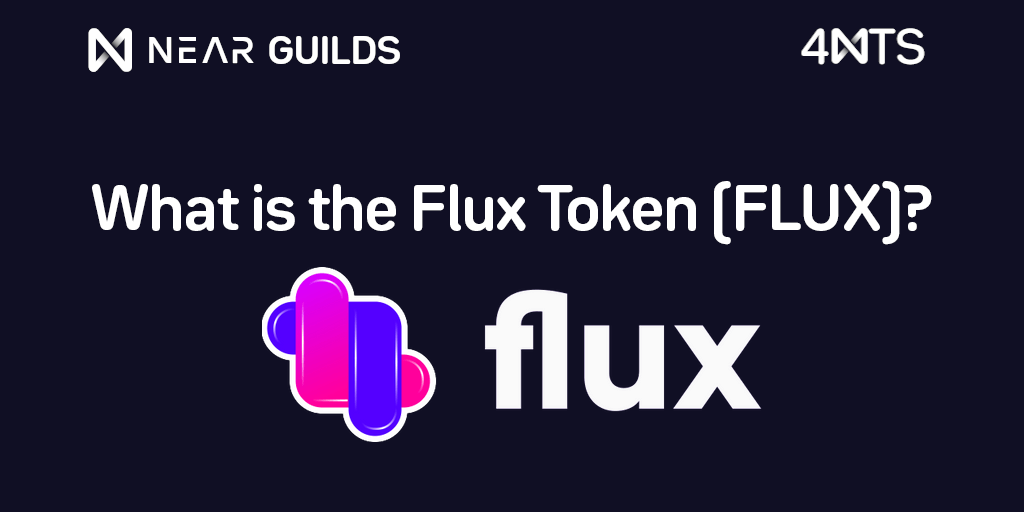What is the Flux Token (FLUX)?


Flux is a fast growing open-prediction market protocol built on NEAR. In essence, Flux is a platform for developers and market creators to offer decentralized prediction services relating to both digital and real-world events. Whether the services offered are in the form of a betting platform, a forecasting event, a data marketplace for insurance data, or a market for weather derivatives, Flux is built to scalably manage between 100 and 80,000 transactions per second, at a cost of less than $0.01 cents per transaction!
At the center of the Flux Ecosystem, is the Flux Token – $FLUX. Like any other cryptocurrency based protocol, the Flux Crypto-Economic model is important in understanding the full scope of opportunities presented by the Flux Ecosystem. As a general primer on Flux tokens, this blog focuses on outlining not only what Flux tokens can be used for, but also why that is important in the context of emerging prediction markets on the Open Web.
$FLUX
Name: Flux Token
Indicator: FLUX
Total Supply: 1,000,000,000 tokens
As a utility token on the NEAR platform, FLUX is used for five primary purposes:
(1) Resolution of Market Outcomes
(2) Market Validity Bonds
(3) Dispute Bonds
(4) Fee Setting and Governance
(5) Lending
Resolution
Resolution refers to the role of validators in ‘resolving’ market outcomes honestly. FLUX must be staked by a validator in order to receive ‘vote tickets’. Vote tickets in turn are used to resolve market outcomes and earn nDAI for their initial resolution activity. According to basic validator dynamics more FLUX must be staked by a given validator, in order for that validator to have more resolution capacity (i.e. more votes on more markets). At scale, this means that a significant portion of all FLUX in circulation will be locked up in pursuit of ‘resolution’ rewards.
Market Validity Bonds
In order to create a new market, a market validity bond must be posted by the market creator. Flux tokens are the currency used by a market creator to post this bond. Ideally, if the market is a valid market – meaning the outcome stemming from trades is acceptable, then the market creator will recover these tokens. However, in the event that the market is invalid – meaning there is no valid outcome from the potential trade, then the posted bond will be distributed to the validators responsible for validating that market. As a bond, the Flux Token is used as collateral for every and any market that is created on Flux.
Note: While Market Validity Bonds must be posted in Flux, the Market Creation Fee is paid in DAI.
Dispute
Disputes arise when market resolutions are contested by one or more of the market participants. In the event of a dispute, the disputing party must use FLUX to post a bond for the dispute being made. This bond will increase in cost proportional to the number of validators required to validate the market. In the event that the dispute is accepted, then their bond is returned to them. In the event that the dispute is denied, then their bond is confiscated by the validators involved in resolving the dispute. Once again, FLUX token is used as collateral for every and any market on Flux in which a dispute must be resolved.
Fee Setting / Governance
Governance of Flux protocol is performed by Flux Token holders. Collaboratively, these token holders vote on the adjustments of key constants for different activities that can be performed on Flux. These constants are crucial in determining:
The Fee for Creating a Market
Market Creation Costs
Cost of the Market Validity Bond
The number of tokens required to become a validator
Lending
$FLUX is also used to denominate the value captured from open-interest locked in escrow. In simple terms, all markets denominate nDAI on Flux. This nDAI can be swapped into CDAI or DAI Savings automatically. Revenue via interest can thus be generated from nDAI in escrow, which, in turn, is claimed in the form of Flux tokens.
What Flux Tokens Are Not Used For:
Importantly, there are a couple of activities on the Flux platform that are not denominated through the Flux Token.
Trading in open marketplaces is all done in nDAI. This is to ensure stability in the value offered in the market.
All Market Creator Fees are paid in nDAI so as to ensure consistent and low creation costs.
Rewards to validators for the correct resolution of markets is also paid in nDAI.
Connecting the Dots:
The Flux Token is the fundamental value imbued into the creation, management, and validation of markets on Flux Protocol. As Flux protocol grows, demand for the Flux token will naturally increase, as more Flux will be required for different market activities. In context, the total available market (TAM) that Flux is disrupting is estimated to be valued at close to $12 trillion dollars. However, because Flux Protocol offers open-market access of any valid market to any participant, it is likely that the total market size will increase over time, as 1) New participants are able to access open-markets through Flux, and 2) New Open Markets can be created by enterprises and other stakeholders who have previously not participated in prediction markets before. As this process unfolds, it is important to remember that there will never be more than 1 billion Flux tokens available, with a sizable portion of those tokens either locked up among validators or used for liquidity purposes.
The Crypto-Economic design is thorough, insofar as Flux will remain in high demand for creating and validating markets, while the markets themselves will operate in nDAI. As such, the risk of volatility for prospective market participants is non-existent, while incentives for ensuring the infrastructure of the protocol remain high.




